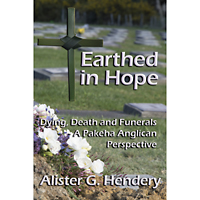“The obvious location for the tribute(s) is as part of the Remembrance (ANZPB, 829) so that they conclude with the act of remembrance. Placed here, the delivery of a tribute(s) could also be accompanied by the placing of symbols on or near the coffin. It also provides a level of participation early on. The tribute(s) should not take place after the Address, as it would ‘obscure the gospel hope of the resurrection as the wave of sentiment or boisterous good humour engulfs the congregation-become-audience.’ The first part of the service focuses on the mourners’ experience of grief and the recollection of the life of the dead person. The latter part moves the focus to the future and to the hope of resurrection. Placed here it allows the minister to later draw the tributes together into the wider context of what God has done for humanity in Christ.
There are a number of hazards to be avoided in giving tributes and it is appropriate for ministers to offer guidance and help in their preparation. Tributes can all too easily drift into romanticised eulogising, leaving me wondering how soon this person will be canonised. Some speakers will be tedious and long winded, others frivolous or pompous, and yet others say more about themselves than the dead person. Many are the risks, but this should not give us cause to bar tributes being given…”
From Chapter 9 — The Funeral Service, of Earthed in Hope: Dying, Death and Funerals – A Pakeha Anglican Perspective. By Alister G. Hendery.

